3.4.5: Kingdom Animalia - Evolution and Phylogeny
- Page ID
- 108076
Unit 3.4.5 - Kingdom Animalia
- Please read and watch the following Learning Resources
- Reading the material for understanding, and taking notes during videos, will take approximately 90 minutes.
- Optional Activities are embedded.
- Bolded terms are located at the end of the unit in the Glossary. There is also a Unit Summary at the end of the Unit.
- To navigate to Unit 3.4.6, use the Contents menu at the top of the page OR the right arrow on the side of the page.
- If on a mobile device, use the Contents menu at the top of the page OR the links at the bottom of the page.
- Describe the features that characterized the earliest animals and when they appeared on Earth
- Recognize the implications of mass animal extinctions that have occurred in evolutionary history
- List the features that distinguish the kingdom Animalia from other kingdoms
- Describe the types of data that scientists use to construct and revise animal phylogeny
- List some of the relationships within the modern phylogenetic tree that have been discovered as a result of modern molecular data
- Interpret the Animalia (metazoan) phylogenetic tree
Introduction
Animal evolution began in the ocean over 600 million years ago with tiny creatures that probably do not resemble any living organism today. Since then, animals have evolved into a diverse kingdom known as Animalia or Metazoa. Although over one million extant species of animals have been identified, scientists are continually discovering more species as they explore ecosystems around the world. The number of extant animal species is estimated to be between 3 and 30 million.
But what is an animal? While we can easily identify dogs, birds, fish, spiders, and worms as animals, other organisms, such as corals and sponges, are not as easy to classify. Animals vary in complexity—from sponges to crickets to chimpanzees—and scientists are faced with the difficult task of classifying them within a unified system. As with all classifications, they must identify traits that are common to all animals as well as traits that can be used to distinguish among related groups of animals. The animal classification system characterizes animals based on their anatomy, morphology, evolutionary history, features of embryological development, and genetic makeup. Classifications are constantly developing as new information about species arises. Understanding and classifying the great variety of living species help us better understand how to conserve the diversity of life on earth.
Even though members of the animal kingdom are diverse, most animals share features that distinguish them from organisms in other kingdoms. All animals are eukaryotic, multicellular organisms, and almost all animals have complex tissue structures with differentiated and specialized tissues. Most animals are motile, at least during certain life stages. All animals require a source of food and perform internal digestion. They are heterotrophic, ingesting other living or dead organisms, but different from fungi that perform external digestion. As consumers of other organisms, they are also distinguished from autotrophic organisms, such as plants, which synthesize their own nutrients through photosynthesis. Animals may be carnivores, herbivores, omnivores, scavengers, detritivores, or parasites (Figure \(\PageIndex{1}\)). Most animals reproduce sexually, although many can reproduce asexually, and the offspring pass through a series of developmental stages that establish a determined and fixed body plan. The body plan refers to the morphology of an animal, determined by developmental cues.

Many questions regarding the origins and evolutionary history of the animal kingdom continue to be researched and debated, as new fossil and molecular evidence change prevailing theories. Some of these questions include the following:
- How long have animals existed on Earth?
- What were the earliest members of the animal kingdom?
- What organism was their common ancestor?
While animal diversity increased during the Cambrian period of the Paleozoic era, 530 million years ago, modern fossil evidence suggests that primitive animal species existed much earlier.
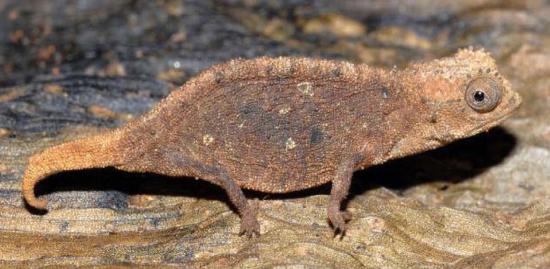
History of Animal Life
Animals of the Pre-Cambrian
It is hypothesized that early animal life, termed Ediacaran biota, evolved from protists during the period before the Cambrian, from about 635 Ma to 543 Ma, during the late Proterozoic Era. Some protist species called choanoflagellates closely resemble the choanocyte cells in the simplest animals, sponges. In addition to their morphological similarity, molecular analyses have revealed similar sequence homologies in their DNA.
The earliest animal biota was long believed to include only tiny, sessile, soft-bodied sea creatures. However, recently there has been increasing scientific evidence suggesting that more varied and complex animal species lived during this time, and possibly even before this period, known as the Ediacaran. Fossils believed to represent the oldest animals with hard body parts were recently discovered in South Australia. These sponge-like fossils, named Coronacollina acula, date back as far as 560 million years, and are believed to show the existence of hard body parts and spicules that extended 20–40 cm from the main body (estimated about 5 cm long). Other fossils from the Ediacaran period are shown in Figure \(\PageIndex{3}\).
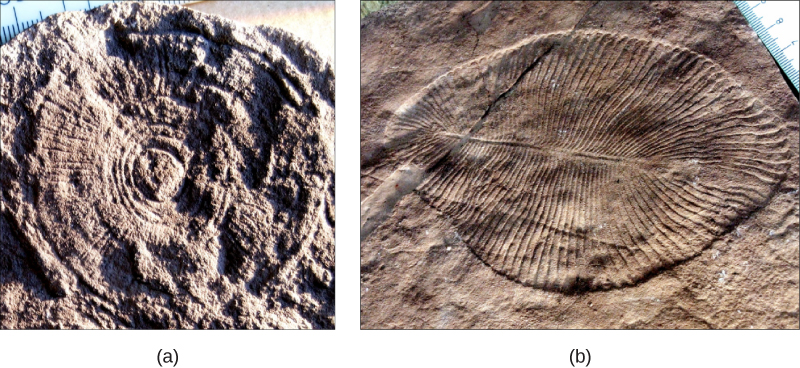
Another recent fossil discovery may represent the earliest animal species ever found. While the validity of this claim is still under investigation, these primitive fossils appear to be small, one-centimeter long, sponge-like creatures. These fossils from South Australia date back 650 Ma, actually placing the putative animal before the great ice age extinction event that marked the transition between the Cryogenian period and the Ediacaran period. Until this discovery, most scientists believed that there was no animal life prior to the Ediacaran period. Many scientists now believe that animals may in fact have evolved during the Cryogenian period, which began 720 Ma.
This 7-minute video provides an overview of the Ediacaran Period, an important moment in the evolution of animal life on earth.
Question after watching: What factors may have led to the diversification of life in this period?
The Cambrian Explosion
The Cambrian period, occurring between approximately 542–488 Ma, marks the most rapid evolution of new animal phyla and animal diversity in Earth’s history. It is believed that most of the animal phyla in existence today had their origins during the Cambrian explosion (Figure \(\PageIndex{4}\)). Echinoderms, mollusks, worms, arthropods, and chordates arose during this period (Figure \(\PageIndex{5}\)). More evidence for this explosion of diversity can be found in Unit 2.2.2.

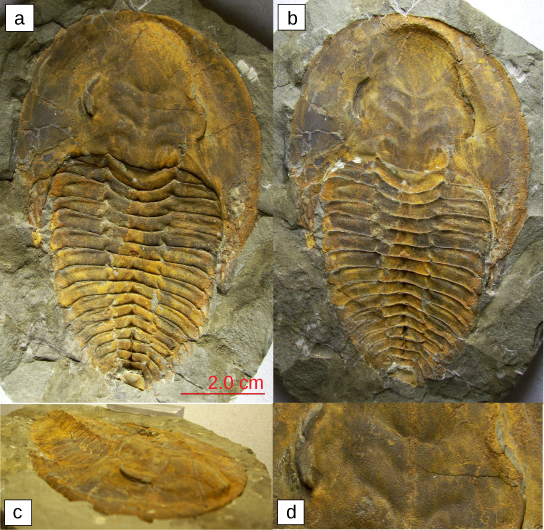
The cause of the Cambrian explosion is still debated. There are many hypotheses that attempt to answer this question, including environmental changes, genetic developments, and new niches. Hypotheses that attempt to explain why the Cambrian explosion happened must be able to provide valid reasons for the massive animal diversification, as well as explain why it happened when it did. There is evidence that both supports and refutes each of the hypotheses described above, and the answer may very well be a combination of these and other hypotheses.
However, unresolved questions about the animal diversification that took place during the Cambrian period remain. For example, we do not understand how the evolution of so many species occurred in such a short period of time. Was there really an “explosion” of life at this particular time? Some scientists question the validity of this idea because there is increasing evidence to suggest that more animal life existed prior to the Cambrian period and that other similar species’ adaptive radiation occurred earlier in history as well. Furthermore, the vast diversification of animal species that appears to have begun during the Cambrian period continued well into the following Ordovician period. Despite some of these arguments, most scientists agree that the Cambrian period marked a time of impressively rapid animal evolution and diversification that is unmatched elsewhere during history.
This 12-minute video provides an overview of animal evolution during the Cambrian Period.
Questions after watching: What were some of the adaptations that evolved in animals in this period that persist to this day? What event is thought to have caused the end of the Cambrian Period as well as an extinction event?
The time between 542–488 million years ago marks which period?
- Cambrian period
- Silurian period
- Ediacaran period
- Devonian period
- Answer
-
A. Cambrian period
Post-Cambrian Evolution and Mass Extinctions
The periods that followed the Cambrian during the Paleozoic Era are marked by further animal evolution and the emergence of many new orders, families, and species. As animal phyla continued to diversify, new species adapted to new ecological niches, or roles within the ecosystem. During the Ordovician period, which followed the Cambrian period, plant life first appeared on land. This change allowed formerly aquatic animal species to invade land, feeding directly on plants or decaying vegetation. Continual changes in temperature and moisture throughout the remainder of the Paleozoic Era due to continental plate movements encouraged the development of new adaptations to terrestrial existence in animals, such as limbed appendages in amphibians and epidermal scales in reptiles.
Changes in the environment often create new niches that contribute to rapid speciation and increased diversity. On the other hand, cataclysmic events, such as volcanic eruptions and meteor strikes that obliterate life, can result in devastating losses of diversity. Such periods of mass extinction have occurred repeatedly in the evolutionary record of life, erasing some genetic lines while creating room for others to evolve into the empty niches left behind (Figure \(\PageIndex{6}\)).
The end of the Permian period (and the Paleozoic Era) was marked by the largest mass extinction event in Earth’s history, a loss of roughly 95 percent of the extant species at that time. Some of the dominant phyla in the world’s oceans, such as trilobites, disappeared completely. On land, the disappearance of some dominant species of Permian reptiles made it possible for a new line of reptiles to emerge, the dinosaurs. The warm and stable climatic conditions of the ensuing Mesozoic Era promoted an explosive diversification of dinosaurs into every conceivable niche in land, air, and water. Plants, too, radiated into new landscapes and empty niches, creating complex communities of producers and consumers, some of which became very large on the abundant food available.
This 10-minute video describes how a branch of the animal kingdom grew to a huge size.
Questions after watching: What were the factors that led to the evolution of such an enormous size? What were the advantages of this large size for the animal?
Two other mass extinction events occurred: one that ended the Triassic period and one that ended the Cretaceous period, bringing the Mesozoic Era to an end (Figure \(\PageIndex{6}\)). The K-Pg (formerly K-T) event (discussed in Unit 3.3.1) led to the end of the dinosaurs as one of the dominant animal lifeforms. In the following Cenozoic Era, mammals radiated into terrestrial and aquatic niches once occupied by dinosaurs, and birds, the warm-blooded offshoots of one line of the ruling reptiles, became aerial specialists.
The appearance and dominance of flowering plants in the Cenozoic Era created new niches for insects, as well as for birds and mammals. Changes in animal species diversity during the late-Cretaceous and early Cenozoic were also promoted by a dramatic shift in Earth’s geography, as continental plates slid over the crust into their current positions, leaving some animal groups isolated on islands and continents, or separated by mountain ranges or inland seas from other competitors. Early in the Cenozoic, new ecosystems appeared, with the evolution of grasses and coral reefs. Late in the Cenozoic, further extinctions followed by speciation occurred during ice ages that covered high latitudes with ice and then retreated, leaving new open spaces for colonization.
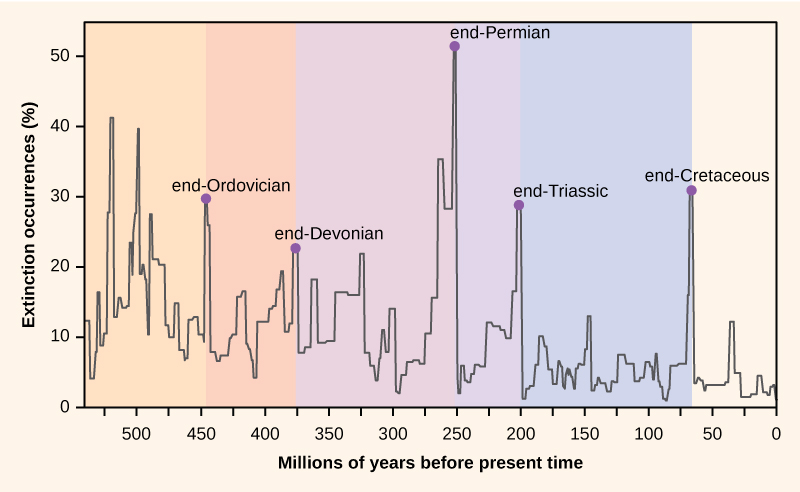
Phylogeny of Animalia
The current understanding of evolutionary relationships between the phyla of animals begins with the distinction between the Eumetazoa (“true” animals with differentiated tissues) and the Parazoa (those like sponges that do not have differentiated tissues). Both Parazoa and Eumetazoa evolved from a common ancestral organism that resembles the modern-day protists called choanoflagellates. These protist cells strongly resemble the sponge choanocyte cells today (Figure \(\PageIndex{7}\)).
Most animals fall into the Eumetazoa. While the organisms in Parazoa (“beside animal”) do not contain specialized tissues they do possess specialized cells that perform different functions. Those cells are just not organized into tissues. These organisms are still considered animals since are eukaryotic and they lack the ability to make their own food.

An overview of the classification of animals is presented in this 4-minute video.
Question after watching: Create a flowchart that would allow you to ask questions about animals at each node point and then allow you to pick one of the branches based on the answer.
Scientists have developed a classification scheme that categorizes all members of the animal kingdom, although there are exceptions to most “rules” governing animal classification. Animals are primarily classified according to morphological and developmental characteristics, such as a body plan. One of the most prominent features of the body plan of true animals is that they are morphologically symmetrical. This means that the distribution of body parts is balanced along an axis. Additional characteristics (see Unit 3.4.6) include the number of tissue layers formed during development, the presence or absence of an internal body cavity, and other features of embryological development, such as the origin of the mouth and anus.
Modern Phylogeny Techniques
Phylogenetic groupings are continually being debated and refined by evolutionary biologists. Each year, new evidence emerges that further alters the relationships described by a phylogenetic tree diagram (Figure \(\PageIndex{7}\)). Recall that until recently, only morphological characteristics and the fossil record were used to determine phylogenetic relationships among animals. Scientific understanding of the distinctions and hierarchies between anatomical characteristics provided much of this knowledge. Used alone, however, this information can be misleading.
Morphological characteristics may evolve multiple times, and independently, through evolutionary history. Analogous characteristics may appear similar between animals, but their underlying evolution may be very different. With the advancement of molecular technologies, modern phylogenetics is now informed by genetic and molecular analyses, in addition to traditional morphological and fossil data. Many evolutionary relationships in the modern tree have only recently been determined as new DNA and RNA analyses are performed on additional animal species.
Biologists strive to understand the evolutionary history and relationships of all life. The study of phylogeny aims to determine the evolutionary relationships between phyla. Currently, most biologists divide the animal kingdom into 35 to 40 phyla. Scientists develop phylogenetic trees, which serve as hypotheses about which species have evolved from which ancestors.
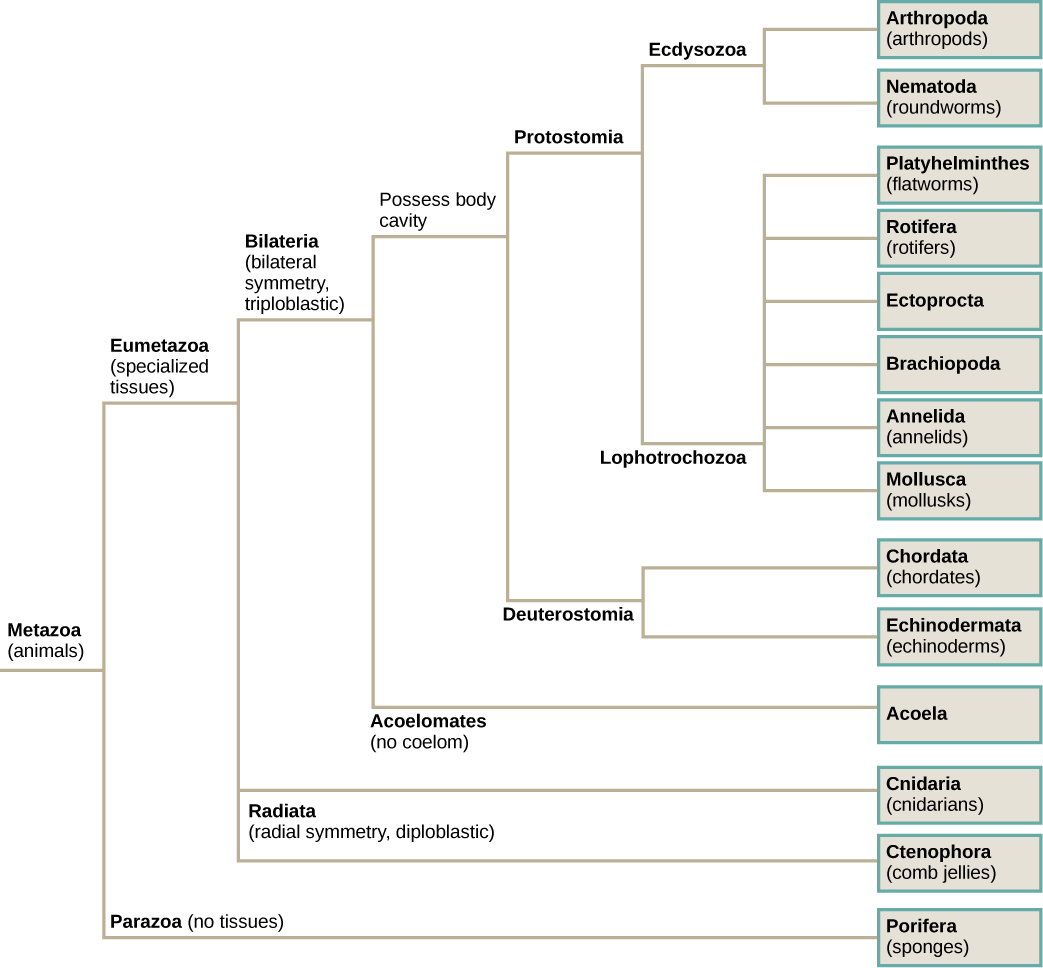
Figure \(\PageIndex{7}\): Which of the following statements is false?
- Eumetazoans have specialized tissues and parazoans don’t.
- Lophotrochozoa and Ecdysozoa are both Bilataria.
- Acoela and Cnidaria both possess radial symmetry.
- Arthropods are more closely related to nematodes than they are to annelids.
- Answer
-
C. Acoela and Cnidaria both possess radial symmetry.
Consulting the modern phylogenetic tree of animals, which of the following would not constitute a clade?
- deuterostomes
- lophotrochozoans
- Parazoa
- Bilateria
- Answer
-
C. Parazoa
Thumbnail: Animal diversity. (CC BY-SA 2.5 / cropped from original; via Wikimedia Commons).


